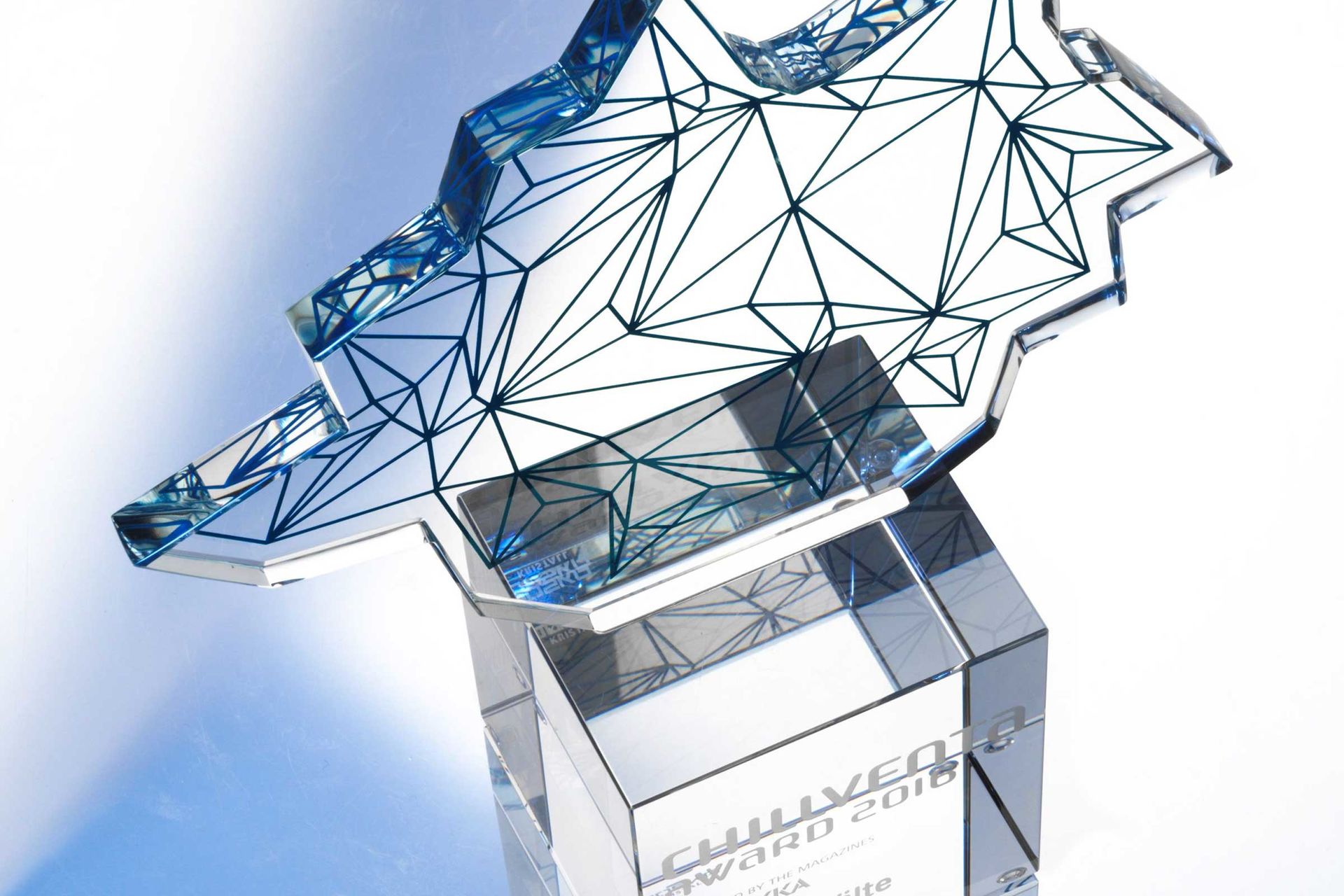European Heat Pump Summit Newsroom
Chillventa Award 2018: And the winners are …

The Chillventa AWARD is moving into its second round. NürnbergMesse and Bauverlag made the presentations to the lucky winners on the first day of the Chillventa exhibition. The Chillventa AWARD was given in four categories: large-scale refrigeration, commercial refrigeration, air-conditioning systems and heat pumps.
Once again this year, the many top-level submissions made it difficult for the jury to pick a winner in each category. The jury considered a range of aspects when assessing submissions: true to Chillventa’s motto of “Connecting Experts”, planning and cooperation on a partnership basis by the parties involved in the project came first, followed by “implementation of the planning instruction”, “functionality”, “depth of innovation” and “cost-effectiveness and operation”. The winners in each category had to score points in each of these areas. The jury has now announced the winners.
In the large-scale refrigeration category:
Duschl Ingenieure GmbH & Co. KG, project “Refrigeration system in film extrusion operations for Ecoform Multifol”
Rosenheim-based company Duschl Ingenieure was engaged to design the new refrigeration supply system for Ecoform Multifol. Right at the conceptual stage there was a vigorous process of coordination between the customer’s production and engineering departments and the planning office, to determine the necessary extent of conversion activities and draw up a general outline for selecting the main technical components.
In consultation with the customer, the decision was taken to switch from a decentralised supply system for each of the production and air-conditioning plants to a more efficient, central refrigeration supply network. The trick with the project lay in an iterative optimisation of all parameters and plant components across all systems to ensure a high level of overall efficiency involving all key participants. Each optimisation stage took account of the impact on the overall system. Compared to similar systems in use in the industry, power savings of 70 percent are achieved at a relatively low cost, since most of the improvements focused on making standard components work better together.
The plant is a refrigeration generation and distribution system with generating power of 2920 kW, split between two refrigeration machines from Engie Refrigeration with matching specifications. Each machine operates using four efficient, oil-free turbocompressors that float freely on magnetic bearings. The refrigeration machines use the refrigerant R1234ze with low greenhouse gas potential (GWP 7), which was a novel option at the time of design.
The distribution system supplies refrigeration to film extrusion units, cooling coils in ventilation systems, circulating air coolers and control panels. The highest possible temperature range for operating the consumers was researched, and a practical temperature spread of 10-16°C was determined. Compared to the normal 6-12°C, this results in lower losses from the supply pipelines, a higher proportion of free cooling, and higher efficiency levels for the refrigeration machines themselves. A cold buffer storage unit with a capacity of about 15 m³ ensures the necessary buffering.
Recooling of the refrigeration machines can be performed using either heat recovery or four dry heat exchangers from Evapco, each with 14 individual fans (total power 4,200 kW). The refrigeration supply system has been in operation since May 2017, and has been fully metered since July 2017.
In the air-conditioning systems category:
premero Immobilien GmbH, project “Hotel Nordport Plaza”
A new four-star-plus hotel opened in Norderstedt, within sight of Hamburg’s airport, in 2018. In addition to its unusual appearance, the Nordport Plaza Hotel has a unique energy strategy. The building services strategies were planned and implemented by the designer, premero Immobilien GmbH & Co. KG; main supplier Daikin Airconditioning Germany GmbH; the building services; and the installation firm, Climatech Leipzig Montage GmbH of Leipzig. For the hotel’s energy strategy, the hotel’s owners wanted to use mainly renewable energy sources and keep its CO2 emissions to a minimum. The highlight of the energy strategy is that all heating and refrigeration needs are met using geothermal energy. As a heat source, geothermal wells provide 261 kW of power, and 435 kW of heat sink power is also available.
To provide the necessary heating or cooling wherever it may be needed with the lowest possible energy losses, the hotel uses a three-wire system with heat recovery. This direct evaporation/condensation system uses the refrigerant R410A, which offered the best environmental balance (total CO2 emissions from electricity generation and refrigerants) across all types of operation (cooling, heating, heat recovery).
Ventilation is supplied by eight ventilation devices installed on the roof and in the basement of the hotel. These move about 60,450 m³ of air each hour. Air-conditioning and heating for the hotel rooms is decentralised on all floors, using water-cooled VRV heat pumps with a heat-recovery function, which are connected to the geothermal systems.
Involving everyone in the planning process in good time made it possible to achieve a common understanding of the technology at an early stage, and so a clearly defined goal and desired outcome of the planning process could be identified from the outset. These clear requirements enabled a structured, interdisciplinary process to be initiated. Early cooperation also offered a time advantage, since it avoided the risk of deviating from the plans. To provide support for its energy-efficiency and carbon-neutrality aspirations, the hotel project is being monitored by the Fraunhofer Institute for ten years.
In the heat pumps category:
Athoka GmbH, project “New residence for the Büthe family”
For this project, a new standalone residence for the Büthe family, the stated goal of the operator was to achieve year-round comfort in terms of heating and service water, while ensuring the building was both highly cost-effective and environmentally friendly. A high level of energy-efficiency was therefore an important factor in the design of the building services. German building efficiency standard 55 was agreed upon as a means of ensuring low operating costs for the longer term, and the final construction fell well within this limit.
The designer and system engineer, Athoka GmbH of Herten, has been using heat-pump technology for a number of years. One special aspect of this project was the installation of Germany’s first air/water heat pump using R32 for underfloor heating and service water production. A multi-split air/air heat pump with three attractively designed terminals ensures air-conditioning comfort in the winter garden and in the living rooms and bedrooms. Pedotherm GmbH of Geseke was responsible for the design and system engineering of the underfloor heating and the controlled room ventilation with integrated heat recovery. Special features with this single-family house are the combination of panel heating and quick-response air heating during changes of season (or all year round for the winter garden, if required), with an active cooling and dehumidifying function in the living and sleeping areas, and controlled home ventilation in the form of an in-floor system with heat recovery.
The contractors and owners stayed in constant communication at all stages of the project. This made it possible to incorporate many wishes and ideas into the design at an early stage and implement them efficiently. In designing the site, the partners benefited from the many years of experience available and the focus on energy-efficient HVAC technology. An important contribution toward keeping the design uncomplicated was also provided by the manufacturer’s layout programs. The many years of collaboration with established network partners in the areas of panel heating, integrated ventilation systems and refrigeration, AC and heating technology also made it possible to implement the project of installing an R32 heat pump in Germany for the first time without difficulty.
In the commercial refrigeration category:
compact Kältetechnik GmbH, project “Biotest Next Level”
Pharmaceutical manufacturer Biotest AG, based in Dreieich, Hesse, needed new refrigeration plant as part of a plan to expand its production. One of the customer’s specifications was that only natural refrigerants should be used. A total of 100 kW had to be used for frozen storage and 30 kW for temperature control, hot-air curtains and pre-cooling. Because of the sensitive area of application in the pharmacy, all machines at the location had to come with 100-percent redundancy. Operational safety and short downtimes, and the need to observe the latest requirements of Germany’s Energy Saving Ordinance (EnEV 2015), the Renewable Energy Act, the Ecodesign Directive 2009/125/EC and the F-Gas Regulation were all essential conditions affecting design and implementation. KKR Kälte-Klima-Reinraumtechnik GmbH, of Langen, worked together with Dresden-based system supplier compact Kältetechnik GmbH at an early point in the planning process to discuss various operating options.
The final element was a system with four CO2 assemblies generating an ambient temperature of -35°C in the storage areas through direct expansion. Cooling for these cascade stages was provided using cooling brine at -8°C. Eight cold-water sets using propane as a refrigerant were used to produce the brine. The eight machines and the resulting eight individual circuits made small refrigerant fill volumes possible for each circuit. Because the propane machines are in the building, the cold-water sets and housings are connected to a permanently running exhaust system and monitored via a gas warning system. With all propane cold-water sets running, brine at -2/-8°C with a cooling capacity of 308 kW is available to provide reliable cooling for the CO2 assemblies and other refrigerated units at this temperature level. Two further propane cold-water sets provide temperature-control zones with brine at a temperature level of -9/-15°C. A redundant configuration is also provided for these machines. All of the waste heat from the propane cold-water sets is used to generate warm brine for freezer evaporator defrosting, and the excess waste heat is fed off using a water-glycol separation circuit to a warm brine circuit via local heat exchangers. A number of heat exchanger stations were included in the plans to structure the heat transfer efficiently throughout the site.
The jury for the 2018 Chillventa AWARDs:
- Christoph Brauneis, Senior Editor, KKA and tab
- Prof. Michael Deichsel, Georg Simon Ohm University of Applied Sciences, Nuremberg
- Rolf Harig, Harig GmbH
- Dr Rainer Jakobs, Informationszentrum Wärmepumpen and Kältetechnik (Information Centre on Heat Pumps and Refrigeration), IZW
- Prof. Ulrich Pfeiffenberger, Fachverband Gebäude-Klima e.V., IGP Ingenieurgesellschaft Pfeiffeberger mbH
- Bertold Brackemeier, Senior Manager Public Relations, NürnbergMesse
